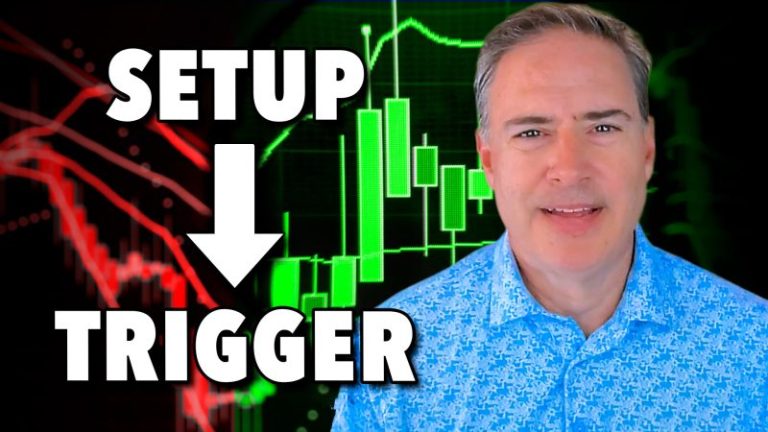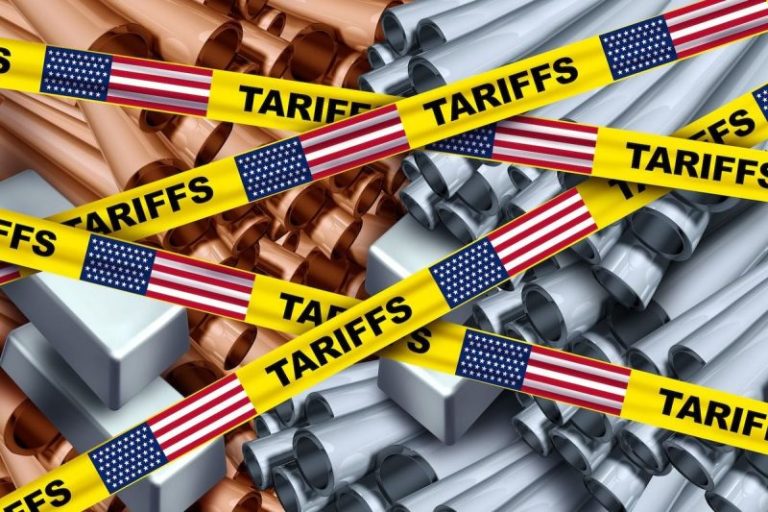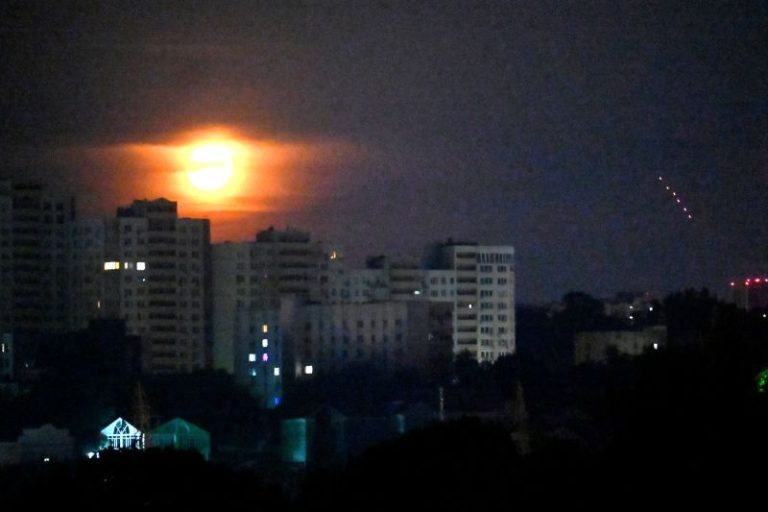New Expansion Hole Intersects 279 Metres Averaging 0.49 % Cu
Nine Drill Rigs Now Active on Site
Osisko Metals Incorporated (the ‘ Company or ‘ Osisko Metals ‘) ( TSX-V: OM ; OTCQX: OMZNF ; FRANKFURT: 0B51 ) is pleased to announce new drill results from the Gaspé Copper Project, located in the Gaspé Peninsula of Eastern Québec.
Osisko Metals Chief Executive Officer Robert Wares commented: ‘Today’s new results continue to confirm the large-scale potential of mineralization at Gaspé Copper. Expansion hole 30-1090 in particular has intersected a significant mineralized width, underscoring the excellent prospects for increasing the size of the known deposit towards the south. The program is advancing well, with a ninth drill rig added recently to accelerate the definition and expansion program.’
Significant new analytical results are presented below and include 25 mineralized intercepts from eight drill holes (Table 1). The infill intercepts are all located inside the defined 2024 Mineral Resource Estimate model (‘MRE’, see November 14, 2024 news release ), and are focused on upgrading inferred mineral resources to measured or indicated categories, as applicable. The expansion intercepts are all located outside the 2024 MRE model and may lead to additional resources that will be classified appropriately within the next MRE update. Maps showing hole locations are available at www.osiskometals.com .
Highlights:
- Drill hole 30-1090
- 279.0 metres averaging 0.49% Cu (expansion)
- 108.0 metres averaging 0.84% Cu (expansion)
- Drill hole 30-1078
- 256.5 metres averaging 0.25 % Cu (infill)
- 381.0 metres averaging 0.22 % Cu (expansion)
- Drill hole 30-1079
- 319.5 metres averaging 0.28 % Cu (infill)
- 180.0 metres averaging 0.37 % Cu (expansion)
- Drill hole 30-1081
- 301.8 metres averaging 0.41% Cu (infill)
- 44.5 metres averaging 0.23 % Cu (expansion)
- Drill hole 30-1084
- 471.4 metres averaging 0.25 % Cu (infill)
- 55.4 metres averaging 0.33 % Cu (expansion)
- 89.7 metres averaging 0.29 % Cu (expansion)
- Drill hole 30-1080
- 520.5 metres averaging 0.23 % Cu (infill)
- 195.0 metres averaging 0.26 % Cu (expansion)
Table 1: Infill and Expansion Drilling
| DDH No. |
From (m) |
To (m) |
Width (m) |
Cu % |
Ag g/t |
Mo % |
CuEq* |
Type |
| 30-1077 |
129.0 |
201.0 |
72.0 |
0.22 |
2.71 |
|
0.24 |
Infill |
| And |
291.0 |
313.5 |
22.5 |
0.23 |
2.62 |
0.009 |
0.28 |
Infill |
| And |
384.0 |
399.0 |
15.0 |
0.52 |
3.73 |
|
0.55 |
Infill |
| And |
428.5 |
450.7 |
22.2 |
0.30 |
2.33 |
0.006 |
0.34 |
Infill |
| And |
481.5 |
553.5 |
72.0 |
0.19 |
1.41 |
0.013 |
0.25 |
Expansion |
| And |
603.8 |
777.0 |
173.2 |
0.27 |
1.49 |
0.035 |
0.42 |
Expansion |
| 30-1078 |
6.0 |
262.5 |
256.5 |
0.25 |
1.79 |
0.008 |
0.29 |
Infill |
| And |
307.5 |
688.5 |
381.0 |
0.22 |
1.69 |
0.022 |
0.32 |
Expansion |
| 30-1079 |
22.5 |
342.0 |
319.5 |
0.28 |
2.14 |
0.008 |
0.32 |
Infill |
| And |
456.0 |
636.0 |
180.0 |
0.37 |
2.54 |
0.007 |
0.41 |
Expansion |
| (Including) |
480.7 |
481.8 |
1.1 |
8.66 |
35.2 |
|
8.84 |
Expansion |
| 30-1080 |
15.0 |
535.5 |
520.5 |
0.23 |
1.02 |
0.013 |
0.29 |
Infill |
| And |
774.0 |
969.0 |
195.0 |
0.26 |
1.28 |
0.030 |
0.39 |
Expansion |
| 30-1081 |
42.0 |
71.0 |
29.0 |
0.16 |
1.79 |
|
0.18 |
Infill |
| And |
94.0 |
395.8 |
301.8 |
0.41 |
3.36 |
0.006 |
0.45 |
Infill |
| (Including) |
322.3 |
330.0 |
7.7 |
1.99 |
14.58 |
|
2.08 |
Infill |
| And |
445.5 |
490.0 |
44.5 |
0.23 |
1.32 |
|
0.28 |
Expansion |
| 30-1084 |
5.6 |
477.0 |
471.4 |
0.25 |
1.95 |
0.009 |
0.30 |
Infill |
| And |
522.6 |
578.0 |
55.4 |
0.33 |
2.64 |
0.041 |
0.51 |
Expansion |
| And |
616.8 |
706.5 |
89.7 |
0.29 |
1.93 |
0.012 |
0.35 |
Expansion |
| 30-1086 |
14.1 |
166.5 |
152.4 |
0.18 |
0.73 |
|
0.19 |
Infill |
| And |
219.0 |
250.5 |
31.5 |
0.22 |
1.13 |
|
0.23 |
Infill |
| And |
433.1 |
466.5 |
33.4 |
0.25 |
1.12 |
|
0.26 |
Infill |
| And |
888.5 |
949.5 |
61.0 |
0.23 |
0.98 |
0.009 |
0.27 |
Expansion |
| 30-1090 |
15.0 |
294.0 |
279.0 |
0.49 |
3.35 |
|
0.51 |
Expansion |
| (Including) |
66.0 |
72.0 |
6.0 |
3.34 |
14.42 |
0.019 |
3.49 |
Expansion |
| (Including) |
164.0 |
172.7 |
8.7 |
2.24 |
9.78 |
|
2.29 |
Expansion |
| And |
331.5 |
357.0 |
25.5 |
0.24 |
1.96 |
|
0.26 |
Expansion |
| And |
417.0 |
525.0 |
108.0 |
0.84 |
7.79 |
|
0.89 |
Expansion |
| (Including) |
433.4 |
445.3 |
11.9 |
3.00 |
30.46 |
|
3.20 |
Expansion |
Notes: Please see explanatory notes below on copper equivalent values and Quality Assurance / Quality Control.
Table 2: Drill hole locations
| DDH No. |
Azimuth (°) |
Dip (°) |
Length (m) |
UTM E |
UTM N |
Elevation |
| 30-1077 |
0 |
-90 |
879 |
316400 |
5425987.8 |
637.7 |
| 30-1078 |
0 |
-90 |
837 |
316300 |
5425903 |
608.4 |
| 30-1079 |
0 |
-90 |
780 |
316298 |
5425814 |
584.3 |
| 30-1080 |
0 |
-90 |
976 |
315500 |
5426425 |
580.0 |
| 30-1081 |
0 |
-90 |
490 |
316505 |
5425800 |
584.9 |
| 30-1084 |
0 |
-90 |
816 |
316397 |
5425889 |
606.9 |
| 30-1086 |
0 |
-90 |
978 |
315500 |
5426320 |
580.0 |
| 30-1090 |
0 |
-90 |
675 |
316477 |
5425532 |
565.7 |
Drill hole 30-1090 intersected new mineralization located 105 metres south of the 2024 MRE model, returning 279.0 metres averaging 0.49% Cu and 3.35 g/t Ag (including 8.7 metres averaging 2.24% Cu and 9.8 g/t Ag) ; a second intercept in this same hole (below the base of the 2024 MRE model) returned 108 metres averaging 0.84% Cu and 7.79 g/t Ag , extending mineralization to a vertical depth of 525 metres.
Drill hole 30-1078 (located in the south-central deposit) intersected 256.5 metres averaging 0.25% Cu and 1.79 g/t Ag , followed by a second intercept of 381.0 metres averaging 0.22% Cu and 1.69 g/t Ag , extending mineralization 280 metres below the base of the 2024 MRE model to a vertical depth of 688 metres.
Drill hole 30-1079 (located in the south-central deposit) intersected 319.5 metres averaging 0.28% Cu and 2.14 g/t Ag , followed by a second intercept of 180.0 metres averaging 0.37% Cu and 2.54 g/t Ag , extending mineralization 307 metres below the base of the 2024 MRE model to a vertical depth of 636 metres.
Drill hole 30-1081 (located in the south-central deposit) intersected 301.8 metres averaging 0.41% Cu and 3.36 g/t Ag ( including 7.7 metres averaging 1.99% Cu and 14.6 g/t Ag at the level of the C Zone skarn ), followed by a second intercept of 44.5 metres averaging 0.23% Cu and 1.32 g/t Ag, extending mineralization 146 metres below the base of the 2024 MRE model to a vertical depth of 490 metres.
Drill hole 30-1084, also located in the south-central portion of the deposit, intersected 471.4 metres averaging 0.25% Cu and 1.95 g/t Ag, followed by a second intercept at depth of 55.4 metres averaging 0.33% Cu and 2.64 g/t Ag, and a third deeper intercept of 89.7 metres averaging 0.29% Cu and 1.93 g/t Ag, extending mineralization 306 metres below the base of the 2024 MRE model to a vertical depth of 706 metres.
Drill hole 30-1080 (located at the northwest end of the deposit) intersected 520.5 metres averaging 0.23% Cu and 1.02 g/t Ag , followed by a second intercept of 195.0 metres averaging 0.26% Cu and 1.28 g/t Ag , extending mineralization 418 metres below the base of the 2024 MRE model to a vertical depth of 969 metres.
Mineralization occurs as disseminations and veinlets of chalcopyrite and is mostly stratigraphically controlled in the area of Needle Mountain, Needle East, and Copper Brook. High molybdenum grades (up to 0.4% Mo) were locally obtained in both the C Zone and E Zone skarns. At least five vein/stockwork mineralizing events have been recognized at Copper Mountain, which overprint earlier skarn/porcellanite-hosted mineralization throughout the Gaspé Copper system.
The 2022 to 2024 Osisko Metals drill programs were focused on defining open-pit resources within the Copper Mountain stockwork mineralization ( see May 6, 2024 MRE press release ). Extending the resource model south of Copper Mountain into the poorly-drilled primary skarn/porcellanite portion of the system subsequently led to a significantly increased resource, mostly in the Inferred category ( see November 14, 2024 MRE press release ).
The current drill program is designed to convert of the November 2024 MRE to Measured and Indicated categories, as well as test the expansion of the system deeper into the stratigraphy and laterally to the south and southwest towards Needle East and Needle Mountain respectively.
All holes were drilled sub-vertically into the altered calcareous stratigraphy, which dips 20 to 25 degrees to the north. The L1 (C Zone) the L2 (E Zone) skarn/marble horizons were intersected in most holes, as well as intervening porcellanites (pale green to white potassic-altered hornfels) that host the bulk of the disseminated copper mineralization.
The November 2024 MRE was limited at depth to the base of the L1 skarn horizon (C Zone), and all mineralized intersections below this horizon represent potential depth extensions to the deposit, to be included in the next scheduled MRE update in Q1 2026.
Explanatory note regarding copper-equivalent grades
Copper Equivalent grades are expressed for purposes of simplicity and are calculated taking into account: 1) metal grades; 2) estimated long-term prices of metals: US$4.00/lb copper, $20.00/lb molybdenum and US$24/oz silver; 3) estimated recoveries of 92%, 70% and 70% for Cu, Mo and Ag respectively; and 4) net smelter return value of metals as percentage of the price, estimated at 86.5%, 90.7% and 75.0% for Cu, Mo and Ag respectively.
Qualified Person
The scientific and technical content of this news release has been reviewed, prepared, and approved by Mr. Bernard-Olivier Martel, P. Geo. (OGQ 492), an independent consultant, is at ‘qualified person’ as defined by National Instrument 43-101 – Standards of Disclosure for Mineral Projects (‘NI 43-101’).
Quality Assurance / Quality Control
Mineralized intervals reported herein are calculated using an average 0.12% copper lower cut-off over contiguous 20-metre intersections (shorter intervals as the case may be at the upper and lower limits of reported intervals). Intervals of 20 metres or less are reported unless indicating significantly higher grades . True widths are estimated at 90 – 92% of the reported core length intervals.
Osisko Metals adheres to a strict QA/QC program for core handling, sampling, sample transportation and analyses, including insertion of blanks and standards in the sample stream. Drill core is drilled in HQ or NQ diameter and securely transported to its core processing facility on site, where it is logged, cut and sampled. Samples selected for assay are sealed and shipped to ALS Canada Ltd.’s preparation facility in Sudbury. Sample preparation details (code PREP-31DH) are available on the ALS Canada website. Pulps are analyzed at the ALS Canada Ltd. facility in North Vancouver, BC. All samples are analyzed by four acid digestion followed by both ICP-AES and ICP-MS for copper, molybdenum and silver.
About Osisko Metals
Osisko Metals Incorporated is a Canadian exploration and development company creating value in the critical metals sector, with a focus on copper and zinc. The Company acquired a 100% interest in the past-producing Gaspé Copper mine from Glencore Canada Corporation in July 2023. The Gaspé Copper mine is located near Murdochville in Québec ‘ s Gaspé Peninsula. The Company is currently focused on resource expansion of the Gaspé Copper system, with current Indicated Mineral Resources of 824 Mt averaging 0.34% CuEq and Inferred Mineral Resources of 670 Mt averaging 0.38% CuEq (in compliance with NI 43-101). For more information, see Osisko Metals’ November 14, 2024 news release entitled ‘Osisko Metals Announces Significant Increase in Mineral Resource at Gaspé Copper’. Gaspé Copper hosts the largest undeveloped copper resource in eastern North America, strategically located near existing infrastructure in the mining-friendly province of Québec.
In addition to the Gaspé Copper project, the Company is working with Appian Capital Advisory LLP through the Pine Point Mining Limited joint venture to advance one of Canada ‘ s largest past-producing zinc mining camps, the Pine Point project, located in the Northwest Territories. The current mineral resource estimate for the Pine Point project consists of Indicated Mineral Resources of 49.5 Mt averaging 5.52% ZnEq and Inferred Mineral Resources of 8.3 Mt averaging 5.64% ZnEq (in compliance with NI 43-101). For more information, see Osisko Metals ‘ June 25, 2024 news release entitled ‘Osisko Metals releases Pine Point mineral resource estimate: 49.5 million tonnes of indicated resources at 5.52% ZnEq’. The Pine Point project is located on the south shore of Great Slave Lake, Northwest Territories, close to infrastructure, with paved road access, an electrical substation and 100 kilometers of viable haul roads.
For further information on this news release, visit www.osiskometals.com , or contact:
Don Njegovan, President
Email: info@osiskometals.com
Phone: (416) 500-4129
Cautionary Statement on Forward-Looking Information
This news release contains ‘forward-looking information’ within the meaning of applicable Canadian securities legislation based on expectations, estimates and projections as at the date of this news release. Any statement that involves predictions, expectations, interpretations, beliefs, plans, projections, objectives, assumptions, future events or performance (often, but not always, using phrases such as ‘expects’, or ‘does not expect’, ‘is expected’, ‘interpreted’, ‘management’s view’, ‘anticipates’ or ‘does not anticipate’, ‘plans’, ‘budget’, ‘scheduled’, ‘forecasts’, ‘estimates’, ‘potential’, ‘feasibility’, ‘believes’ or ‘intends’ or variations of such words and phrases or stating that certain actions, events or results ‘may’ or ‘could’, ‘would’, ‘might’ or ‘will’ be taken, occur or be achieved) are not statements of historical fact and may be forward-looking information and are intended to identify forward-looking information. This news release contains forward-looking information pertaining to, among other things: the tax treatment of the FT Units; the timing of incurring the Qualifying Expenditures and the renunciation of the Qualifying Expenditures; the ability to advance Gaspé Copper to a construction decision (if at all); the ability to increase the Company’s trading liquidity and enhance its capital markets presence; the potential re-rating of the Company; the ability for the Company to unlock the full potential of its assets and achieve success; the ability for the Company to create value for its shareholders; the advancement of the Pine Point project; the anticipated resource expansion of the Gaspé Copper system and Gaspé Copper hosting the largest undeveloped copper resource in eastern North America.
Forward-looking information is not a guarantee of future performance and is based upon a number of estimates and assumptions of management, in light of management’s experience and perception of trends, current conditions and expected developments, as well as other factors that management believes to be relevant and reasonable in the circumstances, including, without limitation, assumptions about: the ability of exploration results, including drilling, to accurately predict mineralization; errors in geological modelling; insufficient data; equity and debt capital markets; future spot prices of copper and zinc; the timing and results of exploration and drilling programs; the accuracy of mineral resource estimates; production costs; political and regulatory stability; the receipt of governmental and third party approvals; licenses and permits being received on favourable terms; sustained labour stability; stability in financial and capital markets; availability of mining equipment and positive relations with local communities and groups. Forward-looking information involves risks, uncertainties and other factors that could cause actual events, results, performance, prospects and opportunities to differ materially from those expressed or implied by such forward-looking information. Factors that could cause actual results to differ materially from such forward-looking information are set out in the Company’s public disclosure record on SEDAR+ (www.sedarplus.ca) under Osisko Metals’ issuer profile. Although the Company believes that the assumptions and factors used in preparing the forward-looking information in this news release are reasonable, undue reliance should not be placed on such information, which only applies as of the date of this news release, and no assurance can be given that such events will occur in the disclosed time frames or at all. The Company disclaims any intention or obligation to update or revise any forward- looking information, whether as a result of new information, future events or otherwise, other than as required by law.
Neither the TSX Venture Exchange nor its Regulation Services Provider (as that term is defined in policies of the TSX Venture Exchange) accepts responsibility for the adequacy or accuracy of this release.
Photos accompanying this announcement are available at:
https://www.globenewswire.com/NewsRoom/AttachmentNg/9056bd4b-e68d-4dd1-a787-1f3b346d2cde
https://www.globenewswire.com/NewsRoom/AttachmentNg/3e9ed8b2-4c21-47aa-9923-f5e30da77ff4










